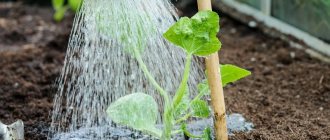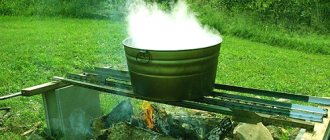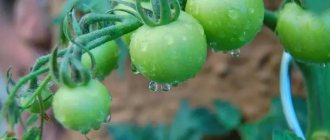Plants » Flowers
0
5640
Article rating
Kira Stoletova
Ficus belongs to a diverse and numerous genus of plants. They are very popular as an indoor plant. Before purchasing a plant, you need to figure out how to water a ficus. Watering schedule is a key factor influencing healthy tree growth.
How to water a ficus at home
In summer, the tree is irrigated frequently; in winter, the amount of watering is reduced. It needs to be grown in a warm and bright room with sufficient air humidity. The rules for the care and maintenance of indoor ficuses of different types differ insignificantly.
How often to water a ficus
Ficus should be watered no more than 2 times every 7 days. With the first cold weather, the amount of watering is gradually reduced. From mid-autumn it is recommended to reduce them to once a week, and from December - once every 10 days.
What a healthy ficus should look like
Water quality for ficus
The best option for watering the plant is rainwater. In winter, you can use melted snow. If you have the opportunity to visit springs regularly, then fresh spring water, which has unique properties, will have a positive effect on the ficus.
For your information! You should refrain from using tap water. It does not have a very good effect on the soil and the plant as a whole. It needs to be left for at least a day.
In special cases, when watering, you can use tap water if no other options are provided. First you need to take water, boil it in advance, and let it cool. To make the water cool faster, you need to divide the volume into several cans and let them settle. Only after everything is done can you water the plant with this water.
To prevent the possibility of flower growth stopping, it is recommended to apply liquid fertilizer twice a month from March to the end of August. Such a move will saturate the soil with all the necessary components and stimulate the healthy growth of the ficus.
The most popular fertilizers suitable for ficus benjamina:
- "Multiflor Aqua";
- "Good Power";
- "Bona forte";
- "Flower Happiness"
Important! Each fertilizer comes with instructions for use. You can also find completely different volumes of the product, some last up to 500 uses.
Fertilizer for home plant care
What is fertilizing and why is it needed?
Feeding the plant is considered one of the main aspects of care. For growth and development, the plant needs nutritional components, which it mainly takes from the soil. However, even high-quality soil rich in minerals and vitamins is depleted after 3–4 months.
- A lack of nutrients leads to undesirable changes:
- stopping flower growth;
- loss of leaf color intensity;
- stretching the stem in height;
- foliage pigmentation;
- yellowing and falling of leaves;
- damage to the stem and foliage by parasites.
Each of the symptoms is a serious problem that can be prevented by organizing high-quality feeding. At different stages of development, the flower needs different types of feeding and different dosages. There are two types of fertilizers: mineral-based and organic.
Signs of improper watering
How to water dracaena for proper growing at home
Despite the fact that ficus is a fairly unpretentious plant, it is negatively affected by improper watering, regardless of whether it is a lack of liquid or, conversely, an abundance. Among the main signs that clearly make it clear that the plant needs to adjust the course of watering or water quality are:
- the gradual appearance of rot on the roots, trunk, and leaves of the plant. This sign is characterized by waterlogging; moisture stagnates in the pot. This can also cause fungal diseases;
- If the rubber ficus stops growing and leaves with yellowed edges can be seen on the lower parts of the plant, most likely the plant does not have enough liquid or useful microelements. In this case, it recommends fertilizing and increasing the number of waterings per week for a while.
Note! It is equally important to take care of adjusting watering depending on the air humidity and temperature of the room in which the ficus is located.
What are the consequences of improper watering?
If you water the plant, completely ignoring all the conditions, this can lead to the flower being affected by various diseases or even the death of the ficus. A similar attitude towards the plant is also manifested through the appearance of pests on the leaves. The most common problems associated with improper watering that does not correspond to the season or air humidity are:
- loss of leaves, appearance of yellow spots on both sides of the leaf blade of the flower;
- slow development of a dull shade on the leaf blades of the ficus and complete loss of the bright green shade.
If the rules are ignored for a long time, the ficus tree dries out completely.
For novice gardeners, it will be difficult to adjust the watering and fertilizing plan, so it is recommended to focus on the standard scheme. For experienced gardeners, it will not be difficult to determine when the plant exactly needs the addition of liquid based on the dryness of the soil.
What does improper care lead to?
Watering indoor plants at home
The issue of watering worries gardeners for good reason. Plants require water and air for normal development. If watering is excessive, then moisture fills the voids that are intended for air. As a result, the plants rot and die. If there is not enough water, the plant suffers from lack of water and dries out.
Therefore, you need to water your indoor plants sensitively. A small root system needs a competent approach. Moisture-loving plants require more water, drought-resistant plants require less. In summer, the need of plants increases, in winter it decreases.
| Watering requirement | What plants |
| Big |
|
| Small |
|
Use devices at home that are convenient for watering ficus.
Features of the procedure in cold and warm seasons
The rules for caring for ficus are divided into winter and summer periods. This is due to changes in air temperature and humidity.
Winter period
How to water indoor flowers for rapid growth and abundant flowering
The cold season means not only winter, but also the end of autumn, when the weather becomes more severe and frosty. It is on such days that the flow of sap in the trunks and leaves of plants slows down, so it does not need as many micronutrients as before. In order to prevent plants from dying and causing diseases and pests, you need to water the ficus no more than 2 times a month.
Since, in addition to the standard application of liquid to the soil, there is also a method of watering by spraying, as well as a contrast shower, it is recommended to exclude the last two procedures so as not to injure the leaves of the flower.
For your information! It is best to wipe the surfaces of the leaves with a damp swab to clean them and re-hydrate them a little.
Summer period
From the beginning of spring until the last warm autumn days, stable or low air humidity remains. During this period, plants more than ever need more frequent moistening and irrigation of the soil, as well as the supply of more microelements. It is during this period that growth activation occurs; therefore, the plant is watered once a week. In addition to standard soil irrigation, it is recommended to practice a warm shower once every 30 days, and spraying once every 15-20 days.
What ficus looks like in summer
Combining fertilizing with moisture
During the period of active growth from early spring to early autumn, every 10-15 days it is necessary to water the plant with water and fertilizer in order to supply it with the necessary microelements. You can use organic and mineral fertilizers. And also, universal fertilizers with an increased amount of nitrogen.
Feeding allows you to increase the growth of the deciduous crown, but do not forget about the roots. Biostimulating preparations “Zircon” and “Kornevin” can be added to water for irrigation. They will have a beneficial effect on the root system of the tree.
The plant should be fed strictly after watering, using special formulations for ficus plants. The dosage and frequency of feeding are indicated on the packages of the drugs.
Ficus watering technique
Watering a ficus is one of the easiest tasks, but when adding liquid you need to pay attention to the following points:
- before starting to irrigate the soil, it is recommended to deepen the finger by 6-7 cm. This is done so that the liquid is distributed evenly and a layer of water does not form above the soil;
- After most of the water has been absorbed, you need to slightly loosen the soil. Thus, the earth will be saturated with useful microelements, including oxygen;
- There is no need to rush when watering plants. As you slowly add the liquid, you need to make sure that it does not start pouring out of the pan. As soon as this starts to happen, you need to immediately remove it from there and continue the manipulation after a while.
Ficus benjamina - leaves turn yellow and fall off, what to do
The standard fertilization method is quite simple, but in addition to it, you also need to spray the flower. To do this you will need a special liquid sprayer.
Note! If the process of watering the ficus is carried out incorrectly for some time, but the gardener still determines this based on the signs, then nothing bad will happen. You just need to adjust the scheme, which eliminates the possibility of the plant getting other diseases.
Proper flower care
Excess or lack of moisture (how to determine)
It is not always easy for an amateur gardener to understand from the appearance of a ficus why exactly it is experiencing discomfort: from an excess of moisture or from a lack of it. Indeed, in both cases, the plant will look approximately the same: a dull overall appearance, leaves without tone, losing their bright green hue and, ultimately, crumbling.
Lack of moisture for ficus
An external clue in favor of a lack of moisture in a ficus can be the condition of the leaves: it turns yellow, the bottom begins to fall off, dries out and turns brown at the edges, the top of the plant becomes withered, new castings either do not appear at all or grow small, often stopping their development.
Excess moisture for ficus
If moisture, on the contrary, is in excess, the foliage looks drooping, loses its elasticity, turns brown, but not at the edges, but at the base, and softer fragments appear on the leaf blade. The plant quite abruptly loses leaves, both upper and lower.
To notice a sharp overflow, you can smell the soil; it will have a strong stagnant odor.
The following unusual symptoms may occur:
- By all indicators, the plant is overdried, but it stands on the surface of the earth and does not absorb moisture; the problem may be that the substrate is compacted on the surface due to the formation of a salt crust; to solve it, you can loosen the top layer or replace it;
- There was a severe moisture deficit; Having discovered it, the owners begin to water intensively, but the plant still does not get hydrated; perhaps the substrate is so dry that it peels off from the walls of the flowerpot, so the liquid is not absorbed into it, pouring into the pan; in this case, it is best to immerse the plant in water so that the soil is saturated with moisture.
Humidity and spraying
In summer, air humidity decreases, which affects the ficus. In the winter season, on the contrary, it increases, which also entails certain nuances that need to be taken into account when watering the plant.
The ficus itself prefers excessive air humidity, so to create a more favorable environment, periodic watering, regular spraying or rinsing the leaf plates in the shower are required.
Note! Since in many institutions, homes, schools and other buildings, ficus trees are installed to help clean the room from dust, a lot of small solid particles accumulate on their leaf blades. To give the ficus the opportunity to clean the room again, you need to regularly wipe the leaf plates on both sides with a damp sponge or swab.
When the humidity is above 30%, the plants do not need to be sprayed, but if it is below this indicator, then the procedure is carried out with warm or boiled water. The number of sprays is not limited.
Diseases and pests of ficus
Ficus in unfavorable conditions can be exposed to some diseases, but insect pests are much worse for the plant.
Mealybug . This pest can be easily detected, as it looks like a piece of brown cotton wool. In this case, the plant is treated with folk remedies.
Aphid . This insect is dangerous not only to ficus, but also to nearby plants. Treatment consists of spraying the foliage with a soap solution. When a flower is infected with aphids, it is quarantined until it is completely recovered.
Thrips . This insect lives on the inside of leaves. The parasite is dangerous because it sucks all the juice from the plant and leads to its death. Treatment consists of repeated treatment with Pyrethrum solution.
Nematodes . These parasites infect the root system, laying their larvae on it. If no help is provided, the worm secretions will penetrate the ficus trunk and destroy it.
Shield . When attacked by this insect, brown spots form on the outside of the leaf blade. The fight consists of spraying the plant with a soap solution and treating the leaf with Acctelik. If the plant is not given proper care, fungal diseases may occur:
Fungus on leaves . The fungus manifests itself as black spots on the foliage, which lead to drying out and death of the leaf plate.
Gray rot . The disease appears in too hot a room and when the ficus is overwatered. During the disease process, mold appears on the stem and leaves, which when shaken easily flies off the plant. Treatment consists of removing the affected areas. Prevention: moderate watering and frequent ventilation of the room.
Sooty mushroom . A gray coating appears on the leaves. To get rid of a fungal disease, you need to regularly wipe the foliage with a soapy solution. In case of mass infection, it is better to remove the affected leaves from the plant to avoid the spread of the disease.
Root rot . When affected by the fungus, the ficus becomes gray and dies. No cure has yet been found for this disease.
Improper care leads to fungal diseases
How to get rid of midges in indoor flowers using simple methods. In a special publication on our portal, we will talk in detail about how to get rid of pests in indoor plants. You will learn the reasons for their appearance, the types of midges and their signs and measures to prevent the appearance of midges.
Procedure if the plant is wilted or overdried
If it happens that the bush is under the influence of excessive or insufficient watering, it is recommended to immediately check the entire plant for the presence of diseases or pests. Then you need to carefully examine the root system of the plant for the presence of rotten areas. If there are few of them, it is recommended to quickly remove them.
Proper care means a healthy plant
If spider mites or other pests have already appeared on the plant, they can be washed off with a soap solution. To prepare a soap solution, you will need regular soap diluted in boiled water. A cloth is moistened in liquid and passed over all ficus leaves.
The situation is much simpler if the plants did not receive enough water. You need to thoroughly loosen the soil to saturate it with oxygen, and then slowly pour in the liquid with fertilizer. In this way, you can easily restore the balance that is disturbed in the flower.
Ficus is a rather interesting and simple plant. Its ease of care makes it accessible to many people, and its interesting appearance makes it attractive. But despite this, not everyone knows how to water a ficus at home. But everything actually turned out to be simple.
ISO OPTION II - Bioperm for colored hair, 118+104+25 ml
1840 ₽ More details
ISO OPTION I – Biocurl for normal hair, 118+104+25 ml
2485 ₽ More details
Electrocardiographs
Varieties
Ficus belongs to the mulberry family and has about 2 thousand species of plants. Among them there are very unusual in structure and appearance. About 20 varieties of flowers are grown at home. They are not always similar, but share similar requirements for care and cultivation. Here are the most popular indoor ficus plants.
Ficus benjamina
Ficus benjamina is a small tree with dark green leaves with wavy edges, unpretentious to the conditions.
Rubber-bearing
Rubber-bearing plant is a beautiful plant, reaching two meters in height. It is distinguished by its characteristic large fleshy leaf blades, sometimes framed by a yellow edging.
Bengal
Bengal - a tree unique in its shape, has a large number of aerial roots descending vertically from the branches. It grows both in height and width, requiring sufficient space.
Dwarf
Dwarf - a shrub with thin flexible shoots; in a young plant the leaves reach 2-3 cm, have an oval shape, a bubbly surface, and are evenly green and spotted in color.
Safari
Safari is a tree with dense marbled elastic foliage twisted towards the center. It grows slowly and requires sufficient light.











